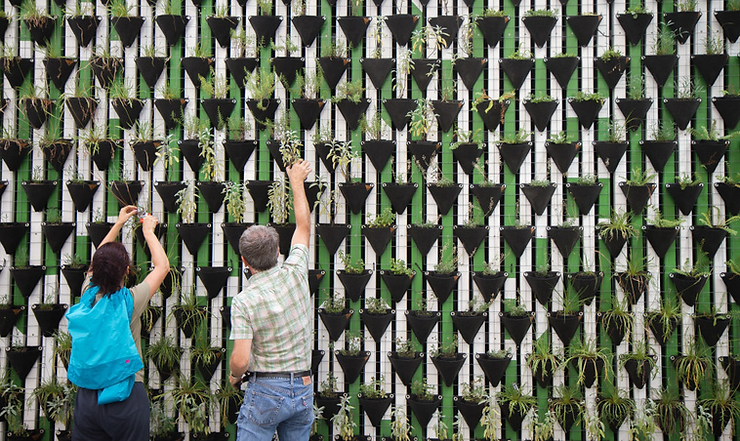Everyone seems to enjoy having live plants in their homes and offices. Winter, summer, it really doesn’t matter. Indoor plants bring a touch of nature and joy to the atmosphere and put everyone in a good mood. In fact, in 2015 an entire interior design concept was created called biophilia design. According to Wikipedia, it’s purpose is to “increase occupant connectivity to the natural environment through the use of direct nature, indirect nature, and space and place conditions”.
One technique used in biophilia design is incorporating living wall gardens into the environment. So what is a living wall garden? Read on to learn more.
(Some of the links within this post are affiliate links on which I receive a small compensation from the sale of certain items with not extra cost to you.)
(As an Amazon Associate I earn from qualifying purchase.)
What is a Living Wall Garden?
A living wall is a “vertical vegetated wall system with irrigation“. It is often referred to as a green wall, living wall, or vertical wall. It can cover from a small two square foot area to an entire wall or side of an atrium. They can be grown on both interior and exterior walls.
Living wall gardens are grown from either soil or other forms of subtrate (the surface or material from which vegetation grows). The larger displays use integrated irrigation systems which are far more efficient than your garden hose or watering can. It’s also a lot less messy that way!
A Variety of Living Walls From Amazon
Basic Types of Living Walls
There are two basic types of living walls, either green facades or green walls.
Green Facades
The green facades are typically climbing plants grown from the ground up and supported by stone walls or buildings. Alternatively, a stainless steel or wooden trellis, meshwork, or cabling provides support for the plants.
Green Walls
Green walls are completely artificial modular unit systems. Plants can be rooted directly into the unit or grown individually in a growth medium and then transplanted into the system.
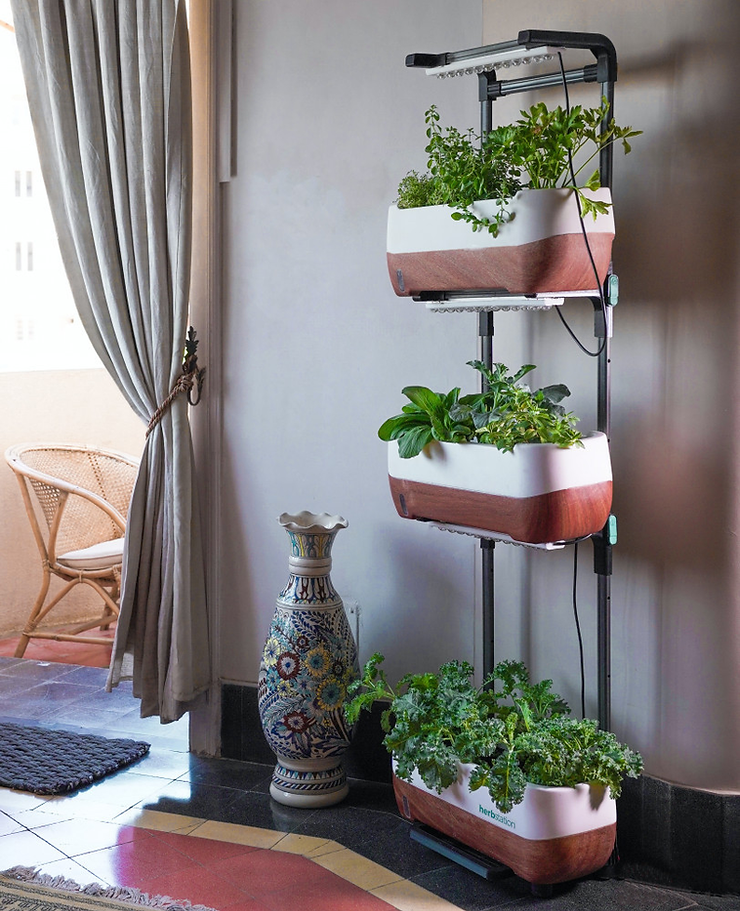
Green Facades:
Exterior Walls – Creeping Vines
Living walls grown on exterior walls provide beauty to an otherwise unsightly spot. They also enhance insulation, as this additional layer helps retain warmth inside the building in the winter and also reduces the overall temperature of the building in the summer.
In the summer, heat in buildings is elevated from solar radiation. Allowing creeping vines to grow on an exterior wall insulates the building and provides a cooling effect. Conversely, creeping vines help retain the inside heat in the winter.
You may be concerned about increasing humidity, but studies have shown that vines on buildings will not create an excessive amount of humidity in the building.
One vine in particular was found to be the best insulator; English Ivy.
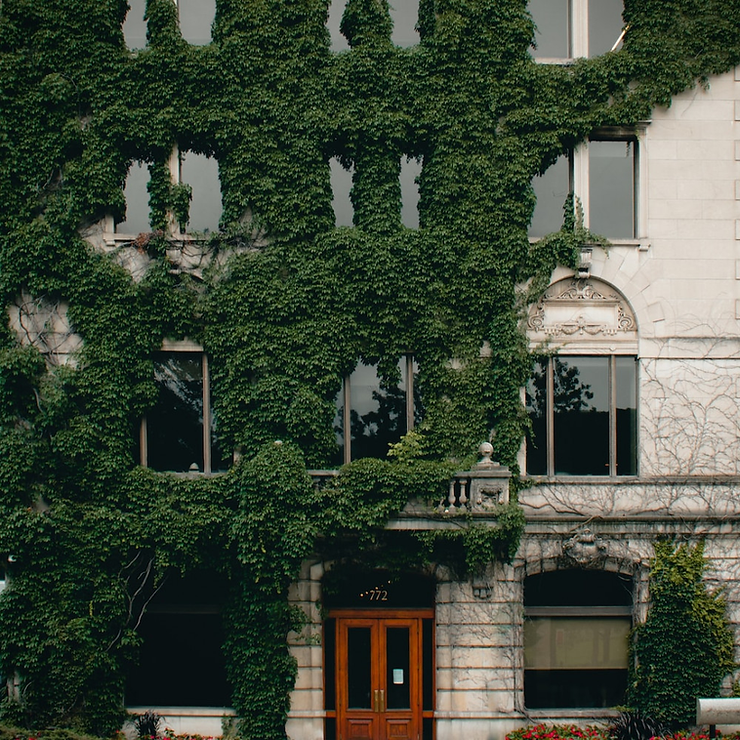
Warning – English Ivy Can be Invasive and Destructive
English Ivy is a fast growing creeper that forms tiny tendrils that attach themselves to porous substances such as brick and mortar. The tendrils not only attach to the surface but can reach into tiny cracks, thus holding the vine to the structure while the vine continues to grow leaves and climb rapidly up the wall. Brick walls are conducive to such vines as there is plenty of soft mortar onto which the tendrils can latch.
Think twice before growing English Ivy on your home. Brick and mortar homes that were built before the 1930’s did not use as sturdy a mortar (much softer) as more contemporary homes do now. English Ivy is very heavy and if the mortar is not securely attached to the home or is of a poor quality, the weight of the ivy can pull down the structure, bricks and all. So know the date when your home was built.
Alternative to English Ivy – Boston Ivy
Boston Ivy is a pretty alternative to English Ivy. However, it does not have the same insulating qualities. It too latches onto the wall surface, but instead of finding cracks to bore into, it produces adhesive discs that stick to the surface.
English Ivy is a perennial evergreen meaning it keeps its leaves throughout the seasons and does not die like an annual. Boston Ivy is deciduous in that the leaves are green in the spring and summer, turn to a reddish hue in the fall, and drop off in the winter.
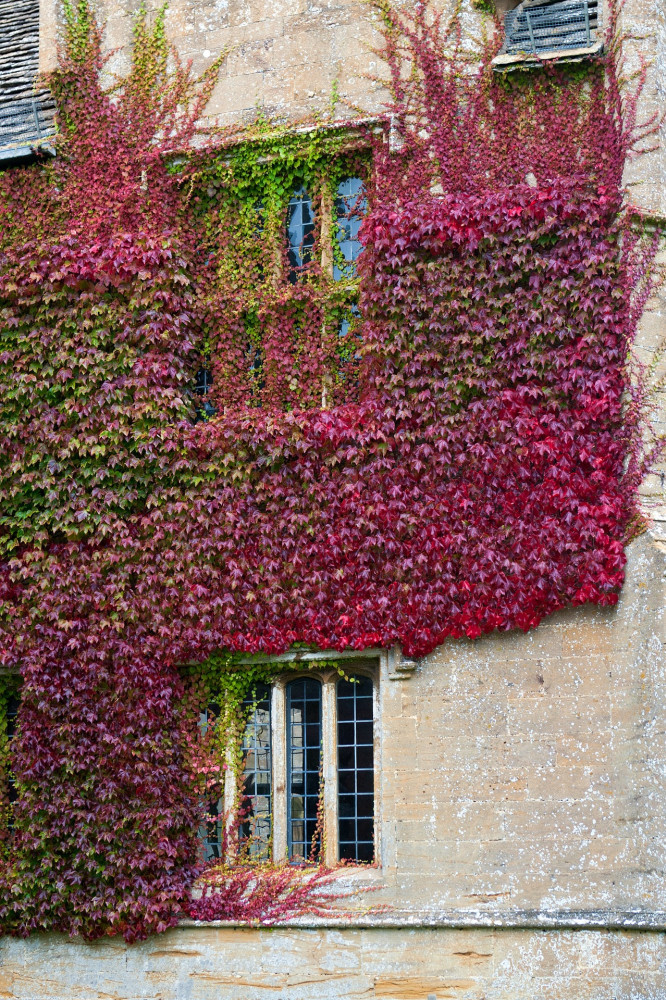
For more information on selecting climbing vines, click here.
Green Walls
Green wall structures are man-made, vertical, modular panels that hold the growing medium which can be either loose soil, mat media, or structural media.
Loose Media Systems
Loose media systems are created with loose soil either in plastic bags placed on a shelf or poured directly onto a shelf which is attached to the wall. This type of system is best used for smaller displays and home gardeners. If the wall is displayed outside, the soil should be replaced every year due to natural erosion from outside elements. If the wall is inside, it can go up to two years before being replaced.
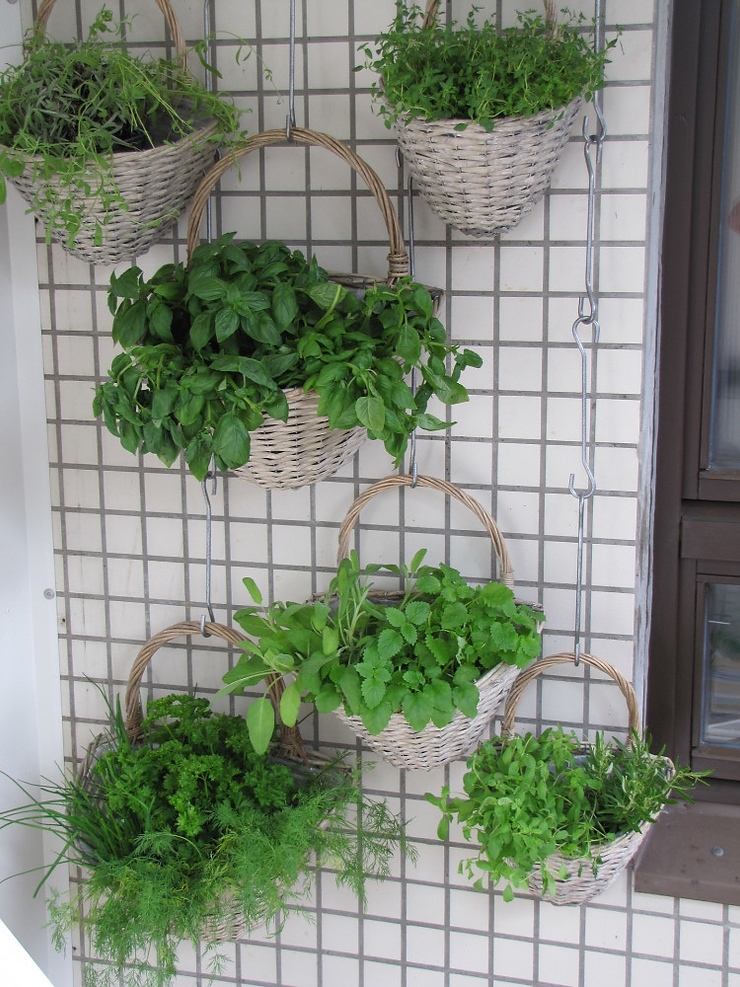
Mat Media
Mat media systems are composed of thin coir fiber or felt mats of multiple layers. Only display small plants in this type of system because the mats are not very sturdy and will tear easily if the plant is too large and heavy with long roots. This type of system is not very water efficient since it does not hold much water. However, if you prefer smaller plants, this may be a good pick for you.
Structural Media
This type of system is more heavy duty and used in much larger displays and walls. These sheet media systems are made from plastic sheets formed into an egg crate-type pattern. They are able to hold more water than the mat media system because they are deeper and have a heftier texture. Structural medias can last up to 20 years because the plastic is not biodegradable.
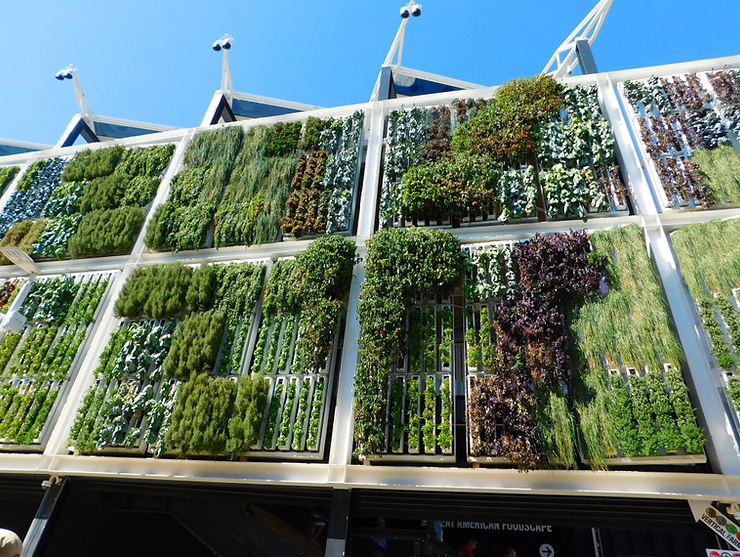
Benefits of Green Facades and Green Walls
Insulation
As I explained above, these forms of gardens provide much needed insulation in homes, especially with worldwide rising temperatures. They help mitigate the effects of global warming in inner cities and beyond.
Green roofs, (living walls on roofs), also have insulating and low thermal absorption properties which reduce the urban heat island effect.
Sound Insulation
Plants absorb sound. The acoustically absorbent nature of the soil and vegetation in green walls helps reduce and soften the sounds of trucks and other urban traffic.
“An extensive thin green wall just 100mm deep will reduce noise transmission by at least five decibels” according to the World Green Infrastructure Network (WGIN).
Breathability and Toxicity
The vegetation in the green walls helps filter out fine particles from the air. The foliage can improve air quality by absorbing gaseous pollutants and heavy metals in the atmosphere.
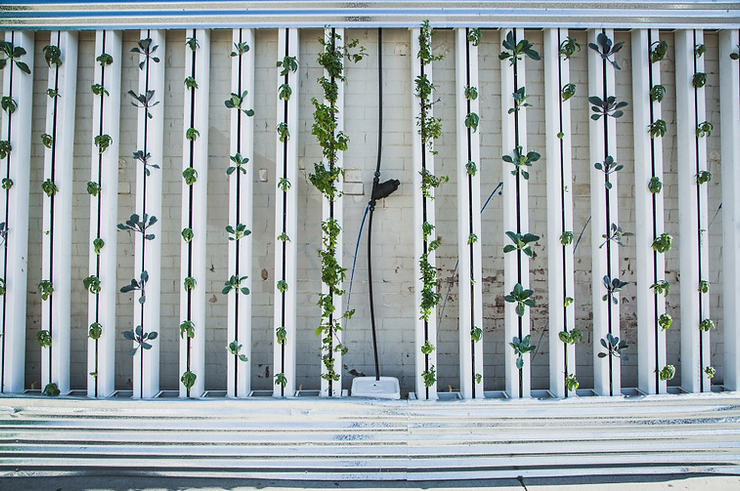
Environmental Impacts
The heat island effect found in many inner cities can be reduced by using green walls and green roofs. The lack of natural vegetation and large concentration of buildings and blacktop surfaces significantly increases temperatures in these areas. These issues can be mitigated through better urban planning which incorporates the use of green walls and roofs.
In addition, green walls and roofs provide great habitats for migrating birds, bees, and butterflies.
They also aid stormwater management.
Final Thoughts
Living green walls can be created by even the most inexperienced gardener. These walls of living vegetation not only add beauty to your home, but also create healthier air and insulate structures from the heat of the summer and cold of the winter.
They can be established using loose media systems, mat media systems, or structural systems.
I hope you have gained some knowledge regarding this not-so-new gardening design and will try to incorporate it into your own garden.
Please leave a comment below and share this post with friends and family.
Happy Gardening,
Nina

